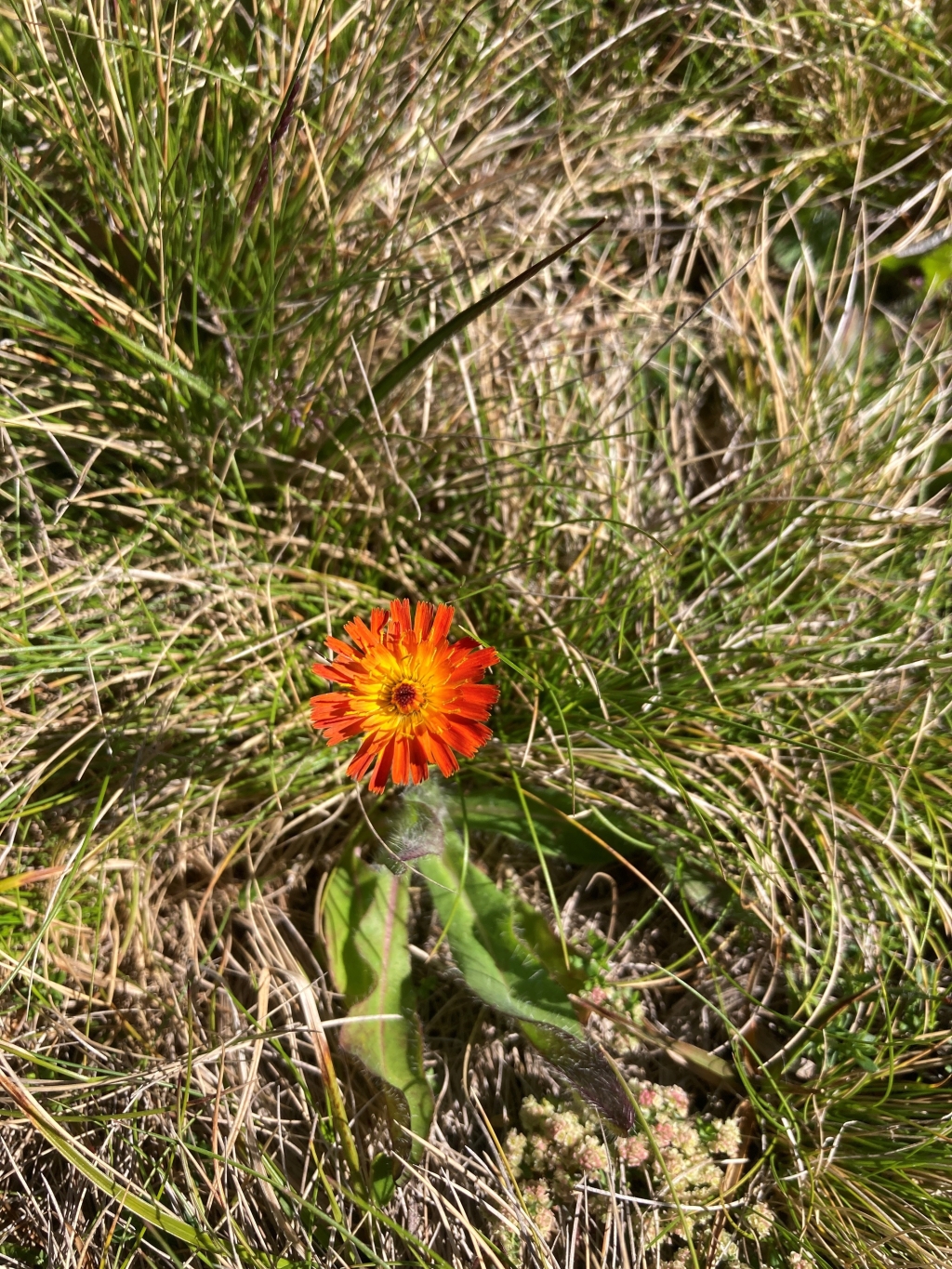Pilosella aurantiaca subsp. aurantiaca
Orange HawkweedPerennial rhizomatous or stoloniferous herb to 65 cm high; flowering stem with sparse stellate hairs, eglandular hairs and occasional glandular hairs. Leaves oblong, elliptic or spathulate to oblanceolate, hirsute; margins entire or remotely denticulate; apex obtuse or subacute; base attenuate; basal leaves 6–20(–30) cm long, 1.2–6(–7) cm wide. Inflorescence with 2–12(–25) capitula; capitula 10–20 mm diam.; involucre campanulate, 5–11 mm long; bracts lanceolate or linear-lanceolate, olive or blackish-green with paler margins, often reddish at apex, with stellate hairs, eglandular hairs and fewer shorter glandular hairs. Florets 25–130, orange-brown to orange-red, turning purplish when dry; ligules 10–15 mm long. Cypselas cylindric, 1.2–1.5(–2) mm long, purplish-black; pappus 3.5–4 mm long. Flowers summer.
VVP, CVU, HSF, Strz, VAlp. Also naturalised NSW, Tas. Native to Europe. A recent garden escape first noticed to be invading native vegetation in Alpine National Park around Falls Creek in 1999 and more recently with infestations also found around the Mt Buller Village.
Pilosella aurantiaca is a troublesome and widespread weed in several overseas countries with similar alpine or cool climates as the Victorian Alps, including New Zealand, USA and Canada. In Victoria P. aurantiaca has been declared a State prohibited weed.
Pilosella aurantiaca is distinctive amongst the Victorian alpine flora in being a ligulate daisy with orange florets.
 Spinning
Spinning

